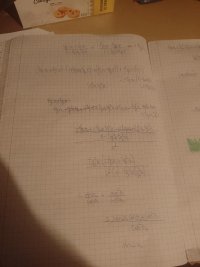[math]\lim_{x \to 0} \frac{tan(a+x)+tan(a-x)-2tan(a)}{x^2}[/math]
I know that
[math]\tan(a+x)=\frac{tan(a)+tan(x)}{1-tan(a)tan(x)}[/math]
and
[math]\tan(a-x)=\frac{tan(a)-tan(x)}{1+tan(a)tan(x)}[/math]
Do You multiply each fraction with this (1-tan(a)tan(x))(1+tan(a)tan(x))?
I expanded the tangents and now I'm stuck.
I know that
[math]\tan(a+x)=\frac{tan(a)+tan(x)}{1-tan(a)tan(x)}[/math]
and
[math]\tan(a-x)=\frac{tan(a)-tan(x)}{1+tan(a)tan(x)}[/math]
Do You multiply each fraction with this (1-tan(a)tan(x))(1+tan(a)tan(x))?
I expanded the tangents and now I'm stuck.

